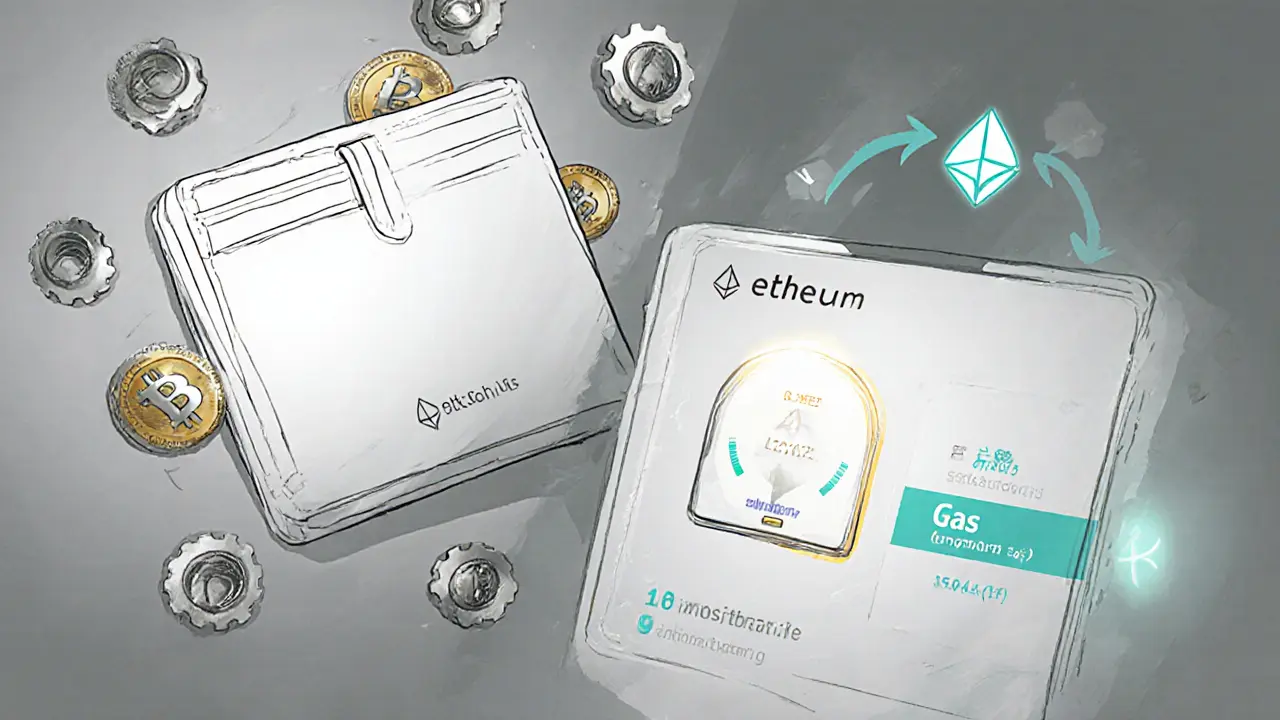Ethereum Gas: Fees, Mechanics, and Ways to Save
When working with Ethereum gas, the fee paid to process transactions and run smart contracts on the Ethereum blockchain. Also known as gas fees, it reflects how much computational work a transaction demands and how quickly you want it confirmed. Understanding gas is the first step to controlling costs, because every action—from sending ETH to calling a DeFi protocol—must include enough gas to be accepted by miners or validators. Ethereum gas therefore becomes a core metric for any user who wants reliable, affordable blockchain interaction.
Key Concepts that Shape Ethereum Gas
The fee ecosystem revolves around three main variables: gas price, gas limit, and the underlying network demand. The gas price, measured in gwei, tells the network how much you are willing to pay per unit of gas. The gas limit, the maximum amount of gas your transaction can consume caps the total cost and prevents runaway contracts. Finally, network congestion pushes the market price up, turning a simple token transfer into a pricey operation. Together these elements form a semantic triple: Ethereum gas encompasses gas price, gas limit, and network demand. Grasping each piece lets you fine‑tune how fast your transaction lands.
In August 2021 Ethereum introduced EIP‑1559, a protocol upgrade that replaced the traditional auction model with a base fee plus optional tip. This change created a predictable floor fee that automatically adjusts to congestion, while still allowing users to add a priority fee to speed up processing. Because the base fee is burned, it also reduces ETH supply over time. The introduction of EIP‑1559 directly influences Ethereum gas by smoothing price spikes and giving wallets clearer cost estimates—another semantic link: EIP‑1559 influences Ethereum gas by adding a dynamic base fee.
Even with EIP‑1559, many users still see high gas bills during peak periods. That’s where layer‑2 scaling, off‑chain solutions like Optimism, Arbitrum, and zk‑Rollups that batch transactions before settling on Ethereum comes into play. By moving most work off the main chain, layer‑2 networks can cut gas costs by 10‑100× while preserving Ethereum’s security guarantees. The relationship reads: Layer‑2 solutions reduce Ethereum gas costs by handling transactions off‑chain. For everyday traders, moving to a layer‑2 bridge often means paying pennies instead of dollars for the same swap.
Smart contracts themselves can be optimized to use less gas. Simple practices—such as packing variables tightly, avoiding unnecessary storage writes, and leveraging calldata instead of memory—shave off dozens of gas units per call. Developers who audit contracts for gas efficiency create a feedback loop: lower gas usage leads to cheaper user interactions, which in turn attracts more activity to the platform. This creates a semantic chain: Smart‑contract design impacts Ethereum gas by determining the amount of computation required. If you’re a regular DeFi user, checking a contract’s gas profile before interacting can save you significant fees over time.
Lastly, timing your transactions can be a low‑tech but effective hack. Gas prices typically dip during off‑peak UTC hours (early mornings in North America, late evenings in Europe). Monitoring tools like gas trackers lets you spot these windows and schedule non‑urgent moves accordingly. Combining timing with layer‑2 bridges and smart‑contract best practices gives you a toolbox to keep Ethereum gas payments manageable. Below you’ll find a curated set of articles that dive deeper into each of these tactics, from beginner‑friendly guides to advanced fee‑optimization strategies.
Gas Fees vs Transaction Fees: Understanding the Core Differences
Learn the key differences between gas fees and transaction fees, how each is calculated, tips to lower costs, and what future blockchain upgrades mean for users.
VIEW MORE
